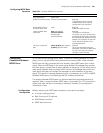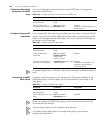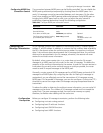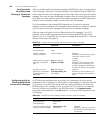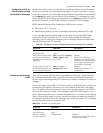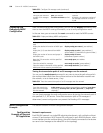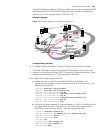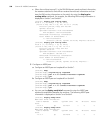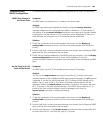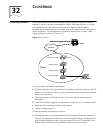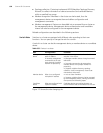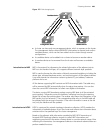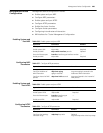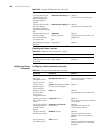
Troubleshooting MSDP Configuration 599
Troubleshooting
MSDP Configuration
The following sections provide troubleshooting guidelines for MSDP configuration.
MSDP Peer Always in
the Down State
Symptom
An MSDP peer is configured, but it is always in the down state.
Analysis
An MSDP peer relationship between the locally configured connect-interface
interface address and the configured peer address is based on a TCP connection. If
the address of local connect-interface interface is inconsistent with the peer address
configured on the peer router, no TCP connection can be established. If there is no
route between the two peers, no TCP connection can be established.
Solution
1 Check the connectivity of the route between the routers. Use the display ip
routing-table command to check that the unicast route between the routers are
correct.
2 Further check that a unicast route exists between two routers that will become MSDP
peers and that the route leads to the two peers.
3 Check that the interface addresses of the MSDP peers are consistent. Use the display
current-configuration command to check that the address of the local
connect-interface interface is consistent with the address of the corresponding MSDP
peer.
No SA Entry in the SA
Cache of the Router
Symptom
An MSDP fails to send (S, G) forwarding entries using an SA message.
Analysis
You can use the import-source command to send the (S, G) entries of the local
multicast domain to the neighboring MSDP peer using SA messages. The acl keyword
is optional. If you do not use this keyword, all (S, G) entries will be filtered out by
default, that is, none of the (S, G) entries in the local multicast domain will be
advertised. Before the import-source command is carried out, the system will send
all (S, G) entries in the local multicast domain. If the MSDP fails to send the (S, G)
entries of the local multicast domain using SA messages, verify that the
import-source command is configured correctly.
Solution
1 Check the connectivity of the route between the routers. Use the display ip
routing-table command to check that the unicast route between the routers are
correct.
2 Further check that a unicast route exists between two routers that will become MSDP
peers and that the route leads to the two peers.
3 Verify the configuration of the import-source command and the corresponding ACL
to ensure that the ACL rule filters the right (S, G) entries.



